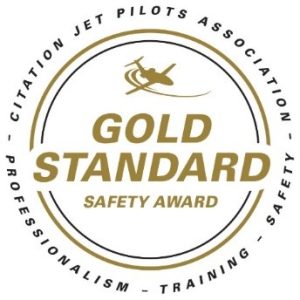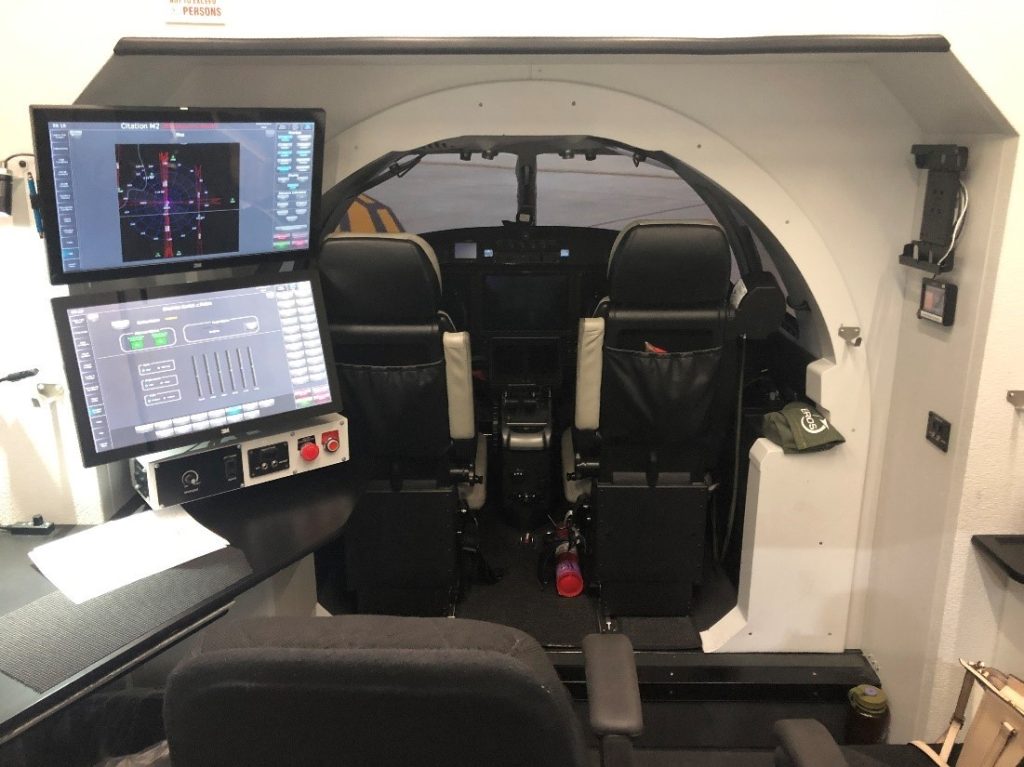by Charlie Precourt, Chair of the CJP Safety & Education Foundation and CJP Safety Committee

The response to CJP’s Gold Standard Safety Award has been fantastic, not only from our members but also from insurers showing keen interest in pilots who complete GSSA requirements. That said, we’re always looking for ways to make it even better.
The CJP Safety Committee recently made several enhancements to GSSA completion criteria that are detailed below. I’m also pleased to note FlightSafety International’s enthusiastic participation and feedback throughout this process, and their willingness to find ways to optimize the simulator experience.
New Opportunities for All Members… Particularly Legacy Citation Owners
There’s been a misconception that the GSSA requires two, 61.58 proficiency checks in the sim. That’s not correct; the first element has always been a 61.58 in a sim, and the second has been six additional hours of dual, either in-aircraft or in a simulator. A second 61.58 in a sim has always been an acceptable means to get the second element, but in-aircraft time was also permitted.
However, the original requirements were difficult for Legacy owner/pilots who have aircraft configurations different from available simulators. So we’re now flipping that on its ear.
The newly enhanced GSSA criteria allows you to do your first 61.58 in the airplane, if necessary, but if you do, you must complete the second session with four hours academics and four hours training in the simulator.
This refined approach opens up opportunities particularly for legacy Citation owners to accomplish their required checkride in their aircraft, while also emphasizing scenarios that are best (and safest) performed in the sim. The additional training scenarios are largely avionics-agnostic, so any simulator that closely approximates the aircraft you fly is suitable for this training.
GSSA requirements are as follows, with changes highlighted in bold:
- 100 multi-engine turbine flight hours as PIC in the year (between 1 AUG 24 and 31 JUL 25)
- Agree to follow CJP Standard Operating Practices (SOPs)
- Complete a Citation 61.58 checkride (simulator preferred, or in aircraft if necessary)
- Complete additional Citation dual instruction comprised of at least 4 flight training hours and 4 hours of ground instruction:
- If the 61.58 was accomplished in a simulator, the additional flight training hours may be either in aircraft or in simulator at the pilot’s discretion. A second 61.58 in simulator also fills the requirement.
- If the 61.58 was accomplished in-aircraft the additional dual hours must be in a Part 142 simulator using elements from the curriculum described above.
- The final requirement for the award is unchanged, which is to complete an enrichment training activity (one of any listed at the CJP website) between August 1, 2024 and July 31, 2025. FSI online courses are among the options to meet this requirement.
Gold Standard Simulator Training
In cooperation with FSI, CJP has developed the Gold Standard Simulator Training (GSST) Program to allow CJP members a streamlined way to complete the annual requirements for the Gold Standard Safety Award and receive valuable training, rather than focus solely on a checkride. To complete the additional training of four hours of academics and four hours of flight training, the FSI GSST scenarios are a turnkey path to completion.
This GSST consists of several elements for pilots to choose from. Each of these elements includes two hours of academics and two hours in simulator, so any combination of two of the four elements will complete the Gold Standard requirement for the sim training required, after a 61.58 checkride is completed in the sim or aircraft.
Members can rotate through scenarios from the elements during successive training sessions each year. The two combined elements can normally be completed in a one day session at FSI.
- Safe to Land 1.0® was designed to address runway excursions. The course provides 11 straight-in approach scenarios that exercise decision making in the presence of approach instabilities requiring the pilot to choose to continue the approach or go around.
- Safe to Land® 2.0 expands on the 1.0 course by adding non-straight-in visual approaches and further adds a focus on proper completion of go around procedures. Go arounds are exercised from unexpected or unusual situations such as after the Missed Approach Point or at the Touchdown Point Limit, while circling, or prior to the MAP. The objective is to increase proficiency in go-arounds from anywhere the STL cue card criteria would require it.
- The Engine Out Training element focuses on building the best techniques for V1 cuts and OEI go-arounds in both the academics and the simulator, with added emphasis on use of runway analysis tools. Additionally, a real-world scenario involving a dual-engine flameout from diesel engine fluid (DEF) contamination (an actual Citation failure re-enactment) is exercised, with an emphasis on cascading systems failures and building systems knowledge associated with sequentially losing the two engines.
- The final element, Instrument Procedures Enrichment Training, exercises several SID, STAR and Approach challenges that focus on the avionics system capabilities and limitations. Cold Temperature compensation procedures, Continuous Descent Final Approach techniques and in-depth review and use of runway analysis are included.

I’ll also note that FSI is making strides toward addressing scheduling issues for our members. While these efforts continue, we also encourage you to partner up with another CJP member for this training. You will both get the same four hours of academics and then share the four-hour sim session – two in the left seat, two in the right – and you both get credit.
Perhaps most importantly, you will also learn from each other. Isn’t that what this should be about? And, again, I’ll note that insurers ARE paying attention to what we’re doing with the GSSA.
Click here to apply for the 2025 Gold Standard Safety Award, and look for additional enhancements to the training process in the coming months.